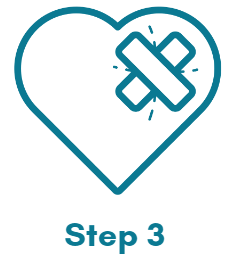What is EMDR Therapy?
Eye Movement Desensitization and Reprocessing (EMDR) therapy is an integrative psychotherapy approach that intends to change the way traumatic memories are stored in the brain.
It has demonstrated success in alleviating distress associated with painful and traumatic memories as well as conditions such post-traumatic stress disorder.
An Integrative Approach
 The effectiveness of EMDR is believed to come from a combination of standardized protocols that incorporate elements from numerous evidence-based therapies for trauma including:
The effectiveness of EMDR is believed to come from a combination of standardized protocols that incorporate elements from numerous evidence-based therapies for trauma including:
- Cognitive Behaviour/Cognitive Processing Therapy
- Psychodynamic Psychotherapy
- Mindfulness Based Therapies
- Somatic Therapy
- Narrative Therapy
- Internal Family Systems Therapy
- Solution Focused Therapy.
The approach is client-centered and strengths-based.
How does EMDR work?
A unique and central component of EMDR is a technique called bilateral stimulation which is used to repeatedly activate opposite sides of the brain and aid in processing the traumatic event.
Alternating rhythmic eye movements, hand-tapping, or sounds are used for bilateral (left-right) stimulation while the client focuses on the trauma memory. These movements are thought to mimic the period of sleep referred to as rapid eye movement or REM sleep which is considered to be the time during which the mind processes events and stores them as memories.
This processing is believed to help trauma survivors become “un-stuck” from their trauma memories and beliefs which facilitates healing. Research into bilateral stimulation suggests that it is associated with
- reduction in unpleasant emotions
- decreased vividness of disturbing images
- relief from somatic complaints
EMDR seems to help the brain reprocess the trapped memories in such a way that normal information processing is resumed. Therapists often use EMDR to help clients uncover and process beliefs that developed as the result of relational traumas, or childhood abuse and/or neglect.
What can EMDR help with?
EMDR was originally designed to treat PTSD and trauma related difficulties.
Research is building for the efficacy of EMDR in treating:
- Depression
- Panic Attacks
- Complicated Grief
- Dissociative Disorders
- Disturbing Throughts
- Phobias
- Body Image Disturbances
- Anxiety Disorders
- Pain Disorders
- Performance Anxiety
- Addictions
- Stress Reduction
- Difficulties regulating emotions
- Personality Disorders
What Can I Expect?
EMDR is typically delivered in one or two weekly sessions for roughly twelve, 50-minute sessions. EMDR can be done virtually or in-person.
Eight Phases of EMDR
Phase 1: History-taking
- Therapist will conduct a thorough assessment of your history and current coping.
- Collaboratively with the therapist, you will identify treatment ‘targets’ including traumatic or distressing memories, current triggers, and goals.
Phase 2: Preparing the client
- You will learn about how EMDR can help you and what form of bilateral stimulation will be used.
- You will be taught strategies to manage emotions, calm the nervous system, and self-soothe before diving into therapy.
Phase 3: Assessing the target memory
- With the therapist, you will identify the trauma memories that you will target in session.
- The therapist will ask you to complete numerous questionnaires through out the course of therapy to monitor your progress.
Phases 4-7: Processing the memory
- Typically spans 1-3 sessions.
- Involves focusing on the memory while engaging in bilateral stimulation.
- Your therapist will help you develop new, positive thoughts, and you will strengthen these through bilateral stimulation.
Phase 8: Evaluating treatment results
- You will explore the impact of the original treatment targets and any new thoughts or memories that came up during therapy. If new distressing memories arise, the therapy continues with those memories as targets. When no distressing memories arise, therapy completes.
In EMDR, you and your therapist work collaboratively as a team and you decide which memories you will focus on.






